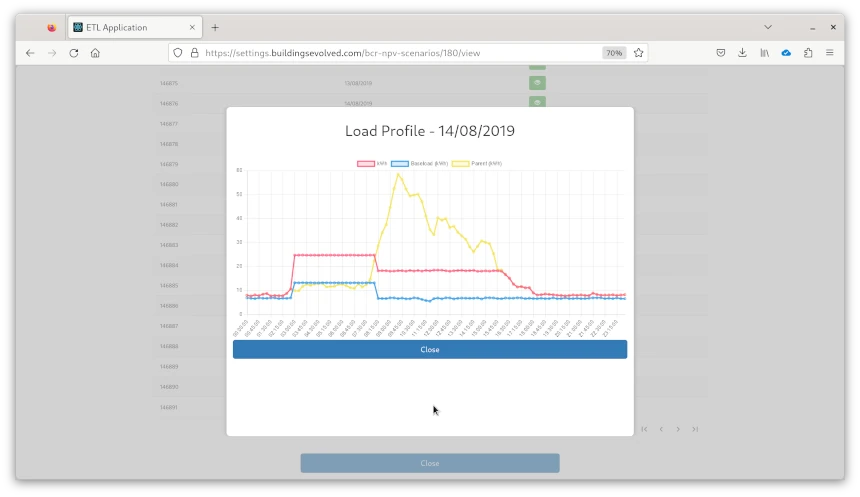With 2023 now well underway, we thought this an opportune time to thank our clients, collaborators and colleagues for the goals kicked in 2022 and the myriad opportunities that 2023 brings forth, particularly around occupant comfort and ‘building-to-grid’ applications - load shifting and orchestrating demand to allow further integration of renewable energy sources to the grid.
by Arne Hansen
A powerful modelling & simulation tool
Delays in project delivery due to the pandemic drove us to create a powerful financial and engineering modelling and simulation tool to evaluate energy security, sustainability initiatives and what constitutes an optimal energy technology mix in the property sector.
Throughout 2022, Buildings Evolved utilised machine learning to build desktop simulations of real-world projects to provide insights into optimal energy mixes of embedded generation, storage and demand management.
It started with frustration - the pandemic delaying physical progress - and the realisation no existing software could simulate project outcomes.
Spreadsheets proved vastly inadequate when it came to making accurate predictions or modelling complex patterns - like weather, the wholesale spot price of electricity or maximum demand. ‘Bucketing’ destroyed resolution and was not an appropriate methodology for our R&D reporting.
We engineered a solution: a web-based application able to generate powerful what-if scenarios and produce quantifiable business cases for each - complete with cash flows, BCR and NPV calculations - with projections extending to fifty years.
True data-driven decision making
We modelled a wide range of what-if scenarios for our R&D projects to test legacy assumptions. They may as well be myths.
One myth busted? In these use cases HVAC optimisation had a far greater value proposition than adding a battery energy storage system.
We’ve used the software to test assumptions around:
- Solar system upgrades
- Battery system - CSIRO arbitrage algorithm/network peak demand
- Battery system - FCAS/market cap payments
- HVAC controls optimisation - model predictive control
- Tariff changes, including wholesale pass-through pricing
- Altered equipment replacement life-cycle and costs
- Sensitivity analysis of discount cash rates, inflation, the projected cost of electricity, et cetera.
Here’s why it’s impressive
The chart below shows electricity interval data from 2021, solely from a standard NEM12 data source. Machine learning has applied a load flexibility disaggregation, which is better in many respects than having sub-meter data.
The machine learning process understands existing solar PV and battery energy storage systems and accounts for them in the analysis. The area in blue indicates the flexible load for each given day.
 Flexible yearly load disaggregation
Flexible yearly load disaggregation
The software calculates each and every interval down to the day, and using this data can fully simulate the generation of invoices, tariff changes or what-if this were site exposed to the wholesale spot price.
 Load shift - daily load profile
Load shift - daily load profile
Applying R&D
In developing the software, we applied the learnings from the International Energy Agency’s Energy in Buildings Program (Annex 81) and the ARENA-funded AIRAH Innovation Hub for Affordable Heating and Cooling (i-Hub) – both in partnership with the CSIRO. Read more about the IEA annex here and the i-Hub here.
Find Out More About Deep Energy
Deep Energy Documentation
Our next steps
We plan to initially provide the benefits of the software via our consultancy business. We are also seeking industry professionals who can become early adopters and help with beta testing.
We’re also rolling out more proof-of-concept sites across NSW and QLD, implementing controls optimisation. We’ll ensure the industry can benefit from the R&D work done over the last few years in control simulations and the development of business cases.
We’ve found some interesting links to expand on topics of interest covered in this email, should you wish to deep dive into future directions in the industry!
Look forward to catching up with you in 2023!
Best regards,
Arne Hansen
Principal Consultant, Buildings. Evolved.

